Howdy, Stranger!
It looks like you're new here. If you want to get involved, click one of these buttons!
Ed's positioning of items
I saw someone else posted something here a while back regarding the relationship of certain items in their position around the castle. I'm glad I'm not the only one curious about that. Attached are my findings.
So there's the holes some folks have mentioned. I'm not referring to solution holes in the stone, I'm referring to the ones that were obviously manmade with cylindrical sides. These holes are important. IMO they are alignment holes. There's one in the center of the large stone facing north that has a triangle shaped stone on top. In the new unearthed quarry, there's a hole that lines up with that one and there's also another on the far south end wall. All three line up.
Next to the path behind the gift shop is a huge metal shaft that was hammered into the ground. It's hidden in a plant. It looks like a locomotive axle and is mushroomed from being hammered in. I believe this served as the initial reference point for the layout of the castle. Ed had to start somewhere and it makes sense a sturdy reference point would be needed. From that axle, one can derive a triangle from the corner of the south wall to where it meets the tower on opposite side.
Some stones have homemade weather vanes still visible. I believe those weather vanes are reference points Ed used to line things up. Instead of having a metal rod poking out of a random stone, at least turn it into a weather vane so it serves an additional purpose.
On the north end, the wall tilts at an angle from the odd Easter Island looking monolith. The wall is exactly long enough to "close the box" had it been laid east/west.
This formation also jives with an image of some line grids someone else posted here. Shooting a line from tip of north angled wall puts you in line straight through heart table, small round table, and another hole in the south wall as I recall. A triangle is formed once again.
The Easter Island monolith serves a purpose. Nothing Ed did was frivolous and this sculpture looks like nothing else there. From entrance gate, to Easter Island monolith, to hole in wall over double beds, you make a right triangle. Masons used a right triangle to square up building layouts in days gone by. The monolith has holes, some natural, some look manmade. A laser in the manmade ones will point towards the hole in the wall at the double bed area.
The measurements are not 100% dead on but close enough to make some hard to ignore patterns. Keep in mind Ed had no fancy tools or even the luxury of an aerial photo. +/- a couple of feet over a 100'+ run isn't a big deal. Add to that, we'll never know how much has been eroded/chipped/stolen.
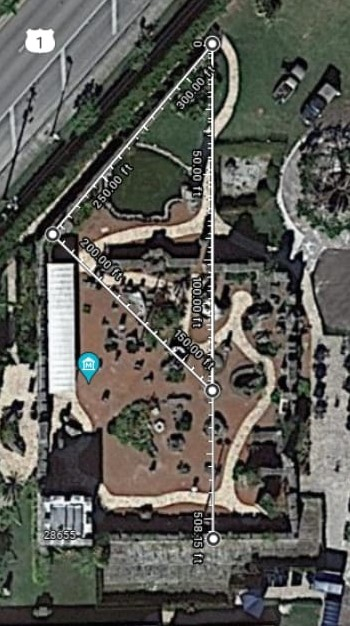
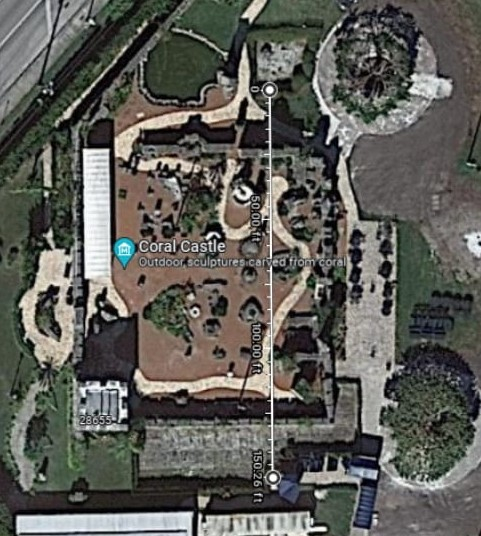
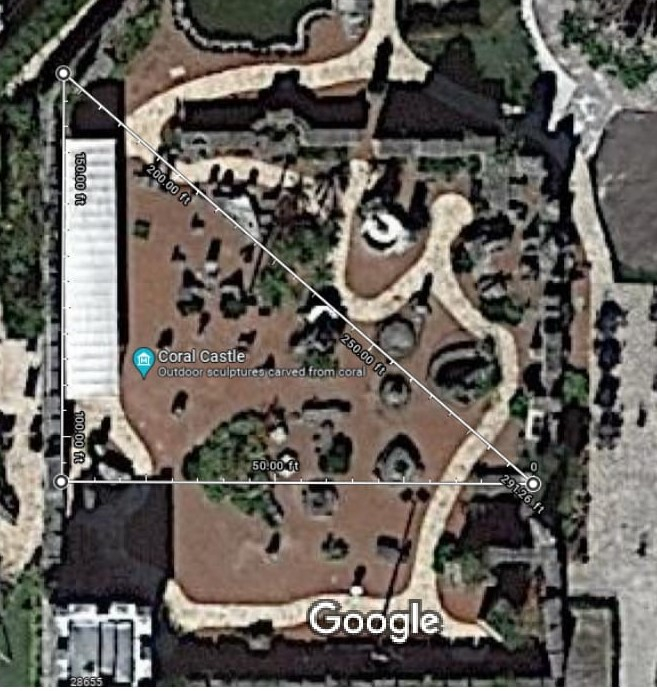
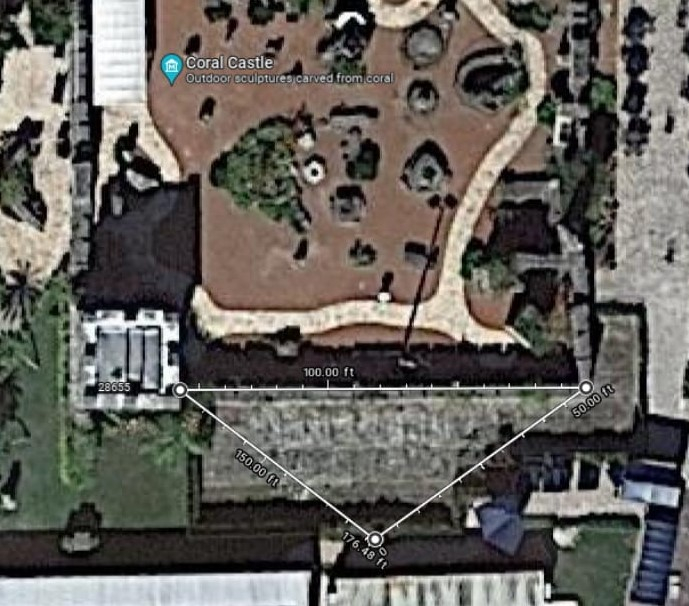
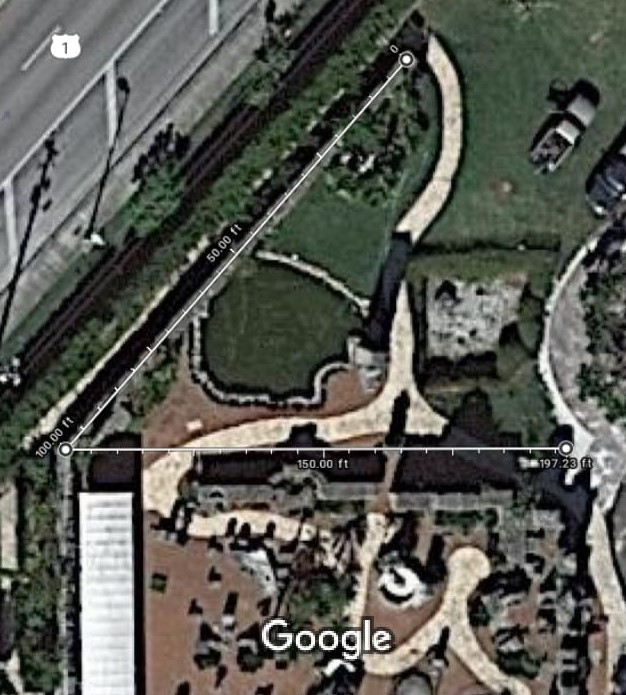
So there's the holes some folks have mentioned. I'm not referring to solution holes in the stone, I'm referring to the ones that were obviously manmade with cylindrical sides. These holes are important. IMO they are alignment holes. There's one in the center of the large stone facing north that has a triangle shaped stone on top. In the new unearthed quarry, there's a hole that lines up with that one and there's also another on the far south end wall. All three line up.
Next to the path behind the gift shop is a huge metal shaft that was hammered into the ground. It's hidden in a plant. It looks like a locomotive axle and is mushroomed from being hammered in. I believe this served as the initial reference point for the layout of the castle. Ed had to start somewhere and it makes sense a sturdy reference point would be needed. From that axle, one can derive a triangle from the corner of the south wall to where it meets the tower on opposite side.
Some stones have homemade weather vanes still visible. I believe those weather vanes are reference points Ed used to line things up. Instead of having a metal rod poking out of a random stone, at least turn it into a weather vane so it serves an additional purpose.
On the north end, the wall tilts at an angle from the odd Easter Island looking monolith. The wall is exactly long enough to "close the box" had it been laid east/west.
This formation also jives with an image of some line grids someone else posted here. Shooting a line from tip of north angled wall puts you in line straight through heart table, small round table, and another hole in the south wall as I recall. A triangle is formed once again.
The Easter Island monolith serves a purpose. Nothing Ed did was frivolous and this sculpture looks like nothing else there. From entrance gate, to Easter Island monolith, to hole in wall over double beds, you make a right triangle. Masons used a right triangle to square up building layouts in days gone by. The monolith has holes, some natural, some look manmade. A laser in the manmade ones will point towards the hole in the wall at the double bed area.
The measurements are not 100% dead on but close enough to make some hard to ignore patterns. Keep in mind Ed had no fancy tools or even the luxury of an aerial photo. +/- a couple of feet over a 100'+ run isn't a big deal. Add to that, we'll never know how much has been eroded/chipped/stolen.





Powered by leedskalnin.com & buzzdev.net

Comments
120×.07 is the answer. 8.4 inches over 10 feet. My father taught me the 3 feet by 4 feet by 5 feet triangle to calculate if a concrete form was square. Masons know how to make the grade for foundations.
Years ago a friend wanted me to dig a hole to put a car axle into the ground. I asked him why dig a hole when I could get the axle to slip into the ground. So using 2 gallons of water slowly poured on the ground that axle was soon to the hub in the ground by just lifting and dropping that axle in the same spot. My father showed me that trick when I had to remove a 6 foot ground rod once. I honestly thought my father was joking about just using water and that ground rod would slid right out of the ground.
The great pyramids have anchor holes all around the base. Water isn't called universal lubricant for nothing.
So using simple tools you can do a lot. If you know how to use those simple tools like a transit level, a tape measure, a string line, and a compass.
My yardstick I have is unique because of the way the 2 ends are graded. 1/2" square on one end and 3/4" on the other. Not to mention the quoted price of $1.22(3/4) if you buy in lots of 10,000 or $12,275.00. Why they wrote $1.22(3/4) instead of $1.2275 each I do not know because the "(/)" takes extra work to print. I know the fulcrum is at 51CM and with a dime on each end it leans to the 1/2" end. Where is the fulcrums balance point with a dime on each end?
Knowing the grade is 1/8" over 3' will tell you the imaginary point the four sides meet at a point. My guess is 12 feet from the 3/4" end is where all 4 planes intersect at a point.
Simple math.
Also, I was wondering what his wall looks like unraveled into a straight line